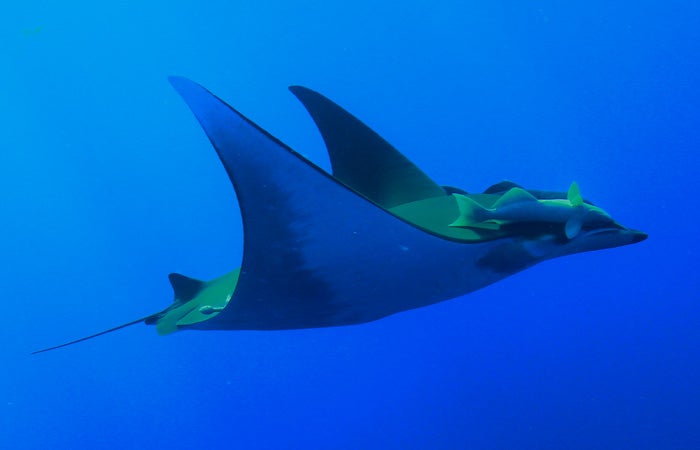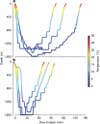Devil Rays Dive Over A Mile Deep
Researchers discover that devil rays dive deeper than anyone knew--and solve a biological mystery in the process

Something comes along now and then that demonstrates–pleasantly–just how much we have yet to discover about the ocean. Today, it’s this: We’ve long thought that warmth-loving devil rays dwelled solely at the ocean’s surface, called the “euphotic” or sunlight zone. But newly published research shows that these fish regularly dive over 1.118 miles (1.8 kilometers) down, putting the species among the deepest-diving marine animals known, such as Cuvier’s beaked whales (1.86 miles deep), and whale sharks (1.18 miles deep).
In the process of learning that devil rays regularly make these dramatic dives, scientists may have solved an anatomical mystery as well: the purpose of the ray’s rete mirabile, a mass of blood vessels in the front of its skull that keep its brain warm.
Simon Thorrold of Woods Hole Oceanographic Institution and his team put satellite tags on 15 Chilean devil rays, and tracked their movement for several months. In addition to recording their surface migrations across the tropical and subtropical North Atlantic Ocean, the tags documented the rays diving deep into the ocean’s bathyal zone. Water temperatures at this depth are below 39 degrees Fahrenheit.

Dive Profiles from Tagged Devil Rays
While more data are needed, the researchers say it’s likely the rays were hunting and feeding on tasty small fish—an active behavior that would require a well-warmed brain to do well.
Before this study, “[I]t was a mystery as to why they had this system, which is a way of keeping brain activity high, even in a cold environment,” Thorrold told BBC News. “We looked at the data and of course, it made complete sense” that the ret__ia__ mirabil__ia helps the rays remain alert and efficient as they feed in the cold deep waters.
Read the study, which has just been published in open format by the journal _Nature Communications_–no subscription required to enjoy the science.